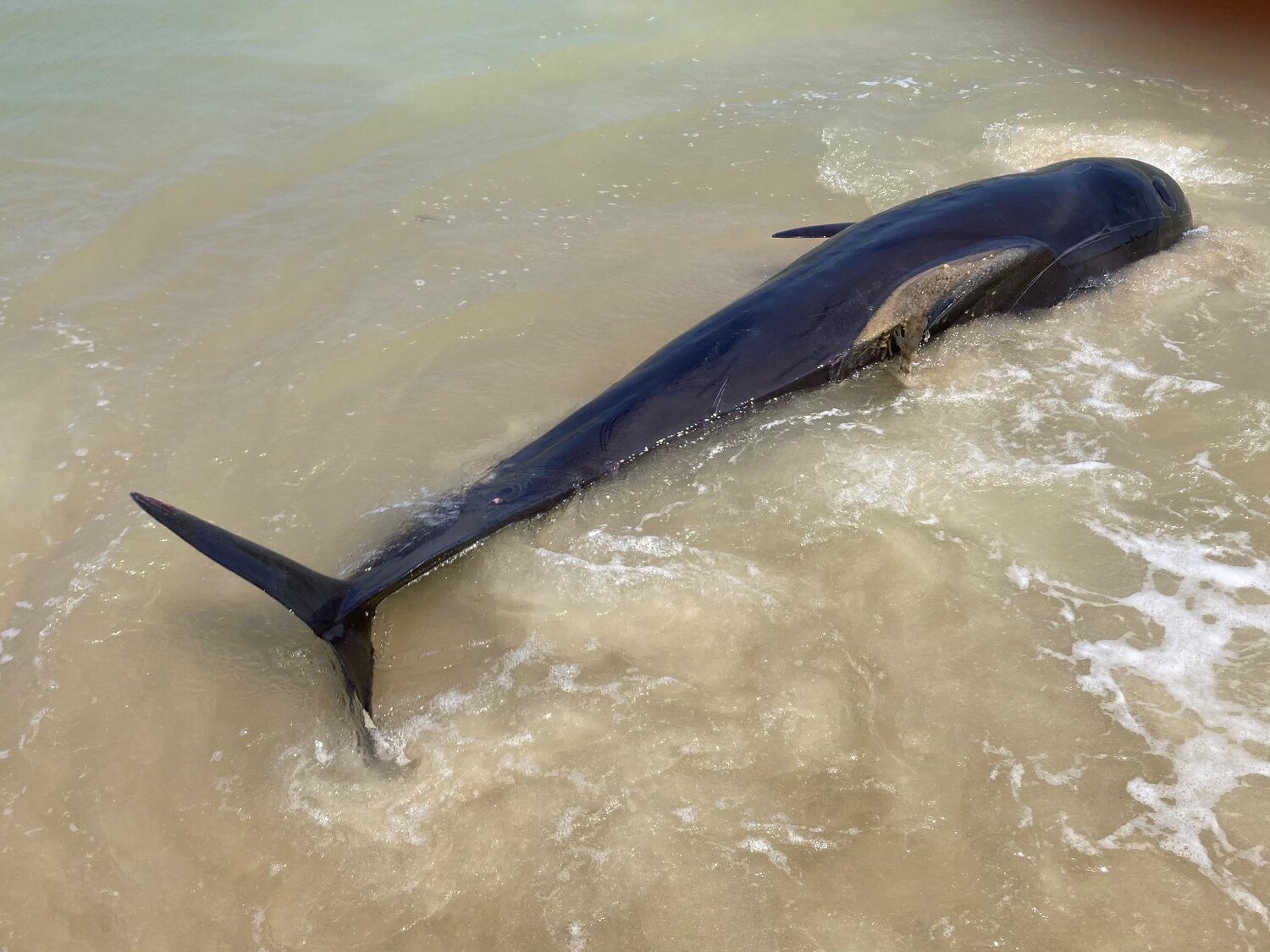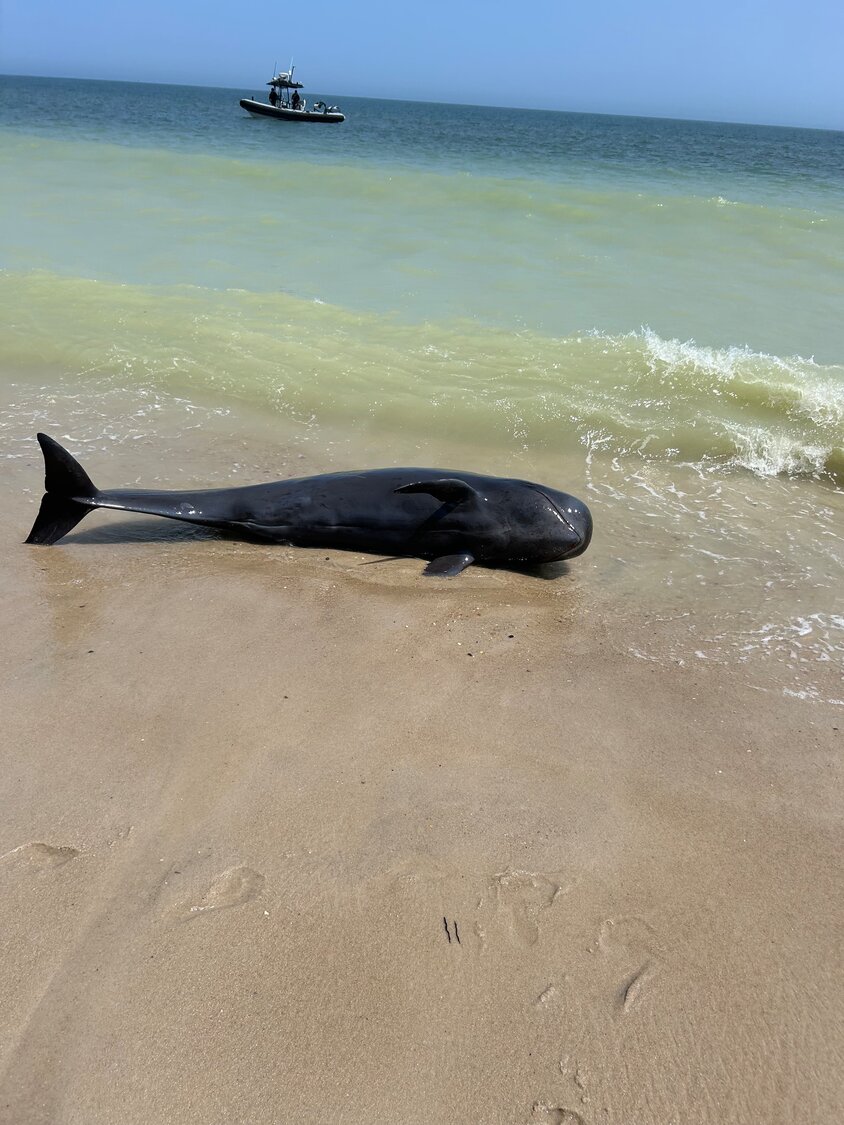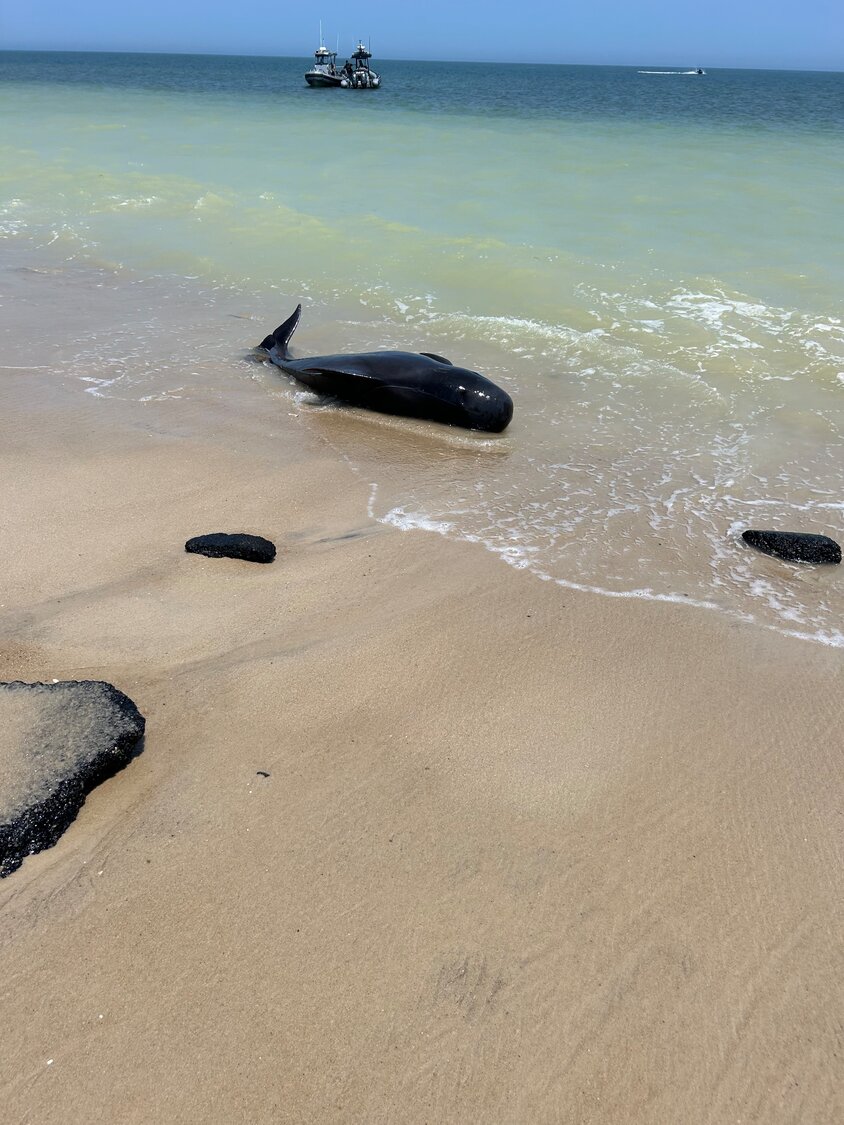Pilot whale washes ashore on north side of Indian River Inlet
Underweight juvenile died, necropsied, disposed of
LEWES — A female juvenile pilot whale weighing about 500lbs. stranded itself along the north side of Indian River Inlet on Aug. 1 and expired shortly thereafter, leading to a necropsy and …

You must be a member to read this story.
Join our family of readers for as little as $5 per month and support local, unbiased journalism.
Already a member? Log in to continue. Otherwise, follow the link below to join.
Please log in to continue |
Pilot whale washes ashore on north side of Indian River Inlet
Underweight juvenile died, necropsied, disposed of
LEWES — A female juvenile pilot whale weighing about 500 pounds stranded itself along the north side of Indian River Inlet on Aug. 1 and expired shortly thereafter, leading to a necropsy and disposal of the body the following day, according to the Marine Education, Research and Rehabilitation Institute founder Suzanne Thurman.
The whale, a short finned pilot whale, is a member of the ocean dolphin family with a population of about 700,000 individuals spread across the Atlantic, Pacific and Indian Oceans. They typically travel in family pods of between 10-30 members, with an elder female in charge.
“That was the first clue something was wrong, she was by herself,” Ms. Thurman said. “They’re usually with a group, this is a pod-type animal. Whenever there is stranding it is a sign that something is drastically wrong.”
This individual was small, leading officials to believe she was young. Short-finned pilot whales can reach a maximum length of about 24 feet and weigh 8,000 pounds. Diet and foraging habits aren’t well understood, though the whales are known to dive down deep in search of food.
This individual wasn’t spreading new light on the matter.
“We could tell she hadn’t been eating for a while, and she had a heavy parasite load, another sign of debilitation” Ms. Thurman said.
During the necropsy, they also found water in the whale’s lungs, which they did have an explanation for.
The animal had stranded herself in such a way that she was in danger of drowning, apart from any other issues. Because the beach was well populated that day, Thurman said people did what they do in these situations, which was to try and help.
When MERR’s rescue line was contacted, Ms. Thurman said she was informed well-meaning bystanders had attempted to return the animal to the water themselves.
“They genuinely intended to help, but it’s never the right thing to do. The animals end up using what energy they have left to get back on shore,” she said. “Their instinct is to come into shore because they are too weak to get to the surface to breathe.”
This whale followed the instinct and returned to shore to find MERR had arrived, but it was too late.
Ms. Thurman said they were able to get the animal out of the water, but by then was likely too far gone to save. The animal, she explained, was exhibiting behaviors inconsistent with continued life.
As part of the necropsy process several samples of the animal were taken, and need to cure for up to two weeks before they can be sent to the lab for examination. Then, it becomes a matter of the lab’s scheduling for results to return, Ms. Thurman explained during a previous interview.
A fin whale beached itself in May, with disease suspected as the cause. No results from that lab testing have been released.
These animals were and still are hunted for food in certain parts of the world, but are also protected by international treaties.







 By
By 



